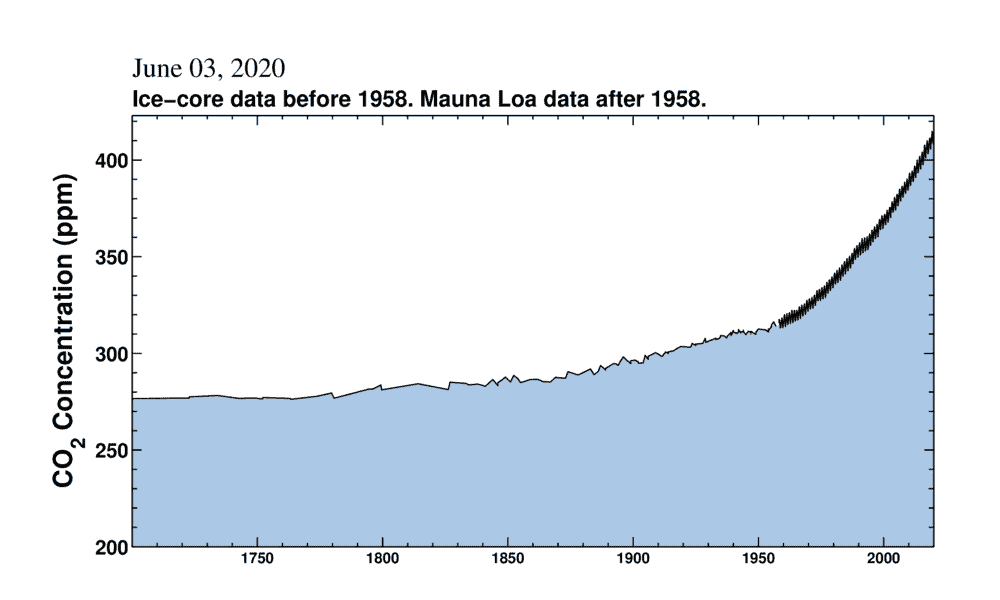Although the world experienced a unique breather thanks to lack of activity due to the coronavirus epidemic and the global recession, the levels of carbon dioxide in the atmosphere reached a new record in May and are back on their usual upward trend. The alarming measurements highlight the need for more ambitious climate action.

Atmospheric carbon dioxide exceeded 417 parts per million on average during May at the Mauna Loa Observatory in Hawaii. This suggests that even though lockdowns around the world have caused emissions to drop temporarily, warming trends are set to continue.
The record represents the highest level of carbon dioxide in the atmosphere for millions of years, based on separate measurements by the Scripps Institution of Oceanography and the United States National Oceanic and Atmospheric Administration.
“People may be surprised to hear that the response to the coronavirus outbreak has not done more to influence CO2 levels,” said Professor Ralph Keeling, head of the CO2 programme at the Scripps Institution. “The crisis has slowed emissions, but not enough to show up perceptibly at Mauna Loa.”
The levels of carbon dioxide in the atmosphere usually peak in May before the growing season starts in the northern hemisphere. They fluctuate during the rest of the year, as the gas gets absorbed by the ocean and by growing plants, and released by decaying organic matter.
Carbon emissions linked to human activities hit a record high last year but fell in the spring due to the effect of the coronavirus epidemic. Global daily emissions in April were 17% lower than normal levels. But now, as lockdowns are starting to be lifted, emissions are expected to fall only between 4% and 7% this year. The International Energy Agency (IEA) estimates fossil fuel-related emissions will be 8% lower by the end of 2020 compared to the previous year.
Either way, this decline will make no major difference to the world’s ability to meet the goals of the Paris Agreement, and keep global heating below the threshold of 2 degrees Celsius that scientists agree is necessary to avoid the worst effects of climate change. The world has already warmed over 1 degree Celsius compared to pre-industrial levels. But, at least there’s a silver lining.
The use of renewables rose during lockdowns, with Europe setting a new record by drawing 55% of its power from clean energy sources on May 24.
For environmental organizations, the fact that emissions are now growing again shows the urgent need to have a green recovery following the pandemic. John Sauven, the executive director of Greenpeace UK, told The Guardian that the UK government should increase its ambition as it will host the next UN climate talks.
“Just a few months of lower emissions were never likely to make a dent in the hundreds of billions tons of carbon that have built up over a century and a half of burning fossil fuels,” he said, adding that the drop in emissions due to the pandemic will remain as a “blip” unless governments increase their ambition.






